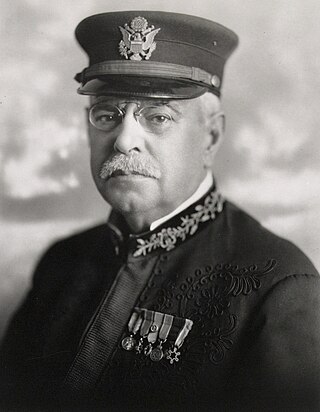
John Philip Sousa was an American composer and conductor of the late Romantic era known primarily for American military marches. He is known as "The March King" or the "American March King", to distinguish him from his British counterpart Kenneth J. Alford. Among Sousa's best-known marches are "The Stars and Stripes Forever", "Semper Fidelis", "The Liberty Bell", "The Thunderer", and "The Washington Post".

A riderless horse is a single horse without a rider and with boots reversed in the stirrups, which sometimes accompanies a funeral procession. The horse, sometimes caparisoned in black, follows the caisson carrying the casket. A riderless horse can also be featured in parades to symbolize either fallen soldiers, fallen police officers or deceased equestrian athletes. A motorcycle can be used as a substitute for a horse though such practice is very rare.

The 2nd Cavalry Regiment, also known as the Second Dragoons, is an active Stryker infantry and cavalry regiment of the United States Army. The Second Cavalry Regiment is a unit of the United States Army Europe and Africa, with its garrison at the Rose Barracks in Vilseck, Germany. It can trace its lineage back to the early part of the 19th century.
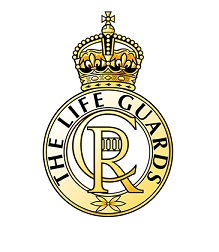
TheLife Guards (LG) is the most senior regiment of the British Army and part of the Household Cavalry, along with The Blues and Royals.

The United States Marine Band is the premier band of the United States Marine Corps. Established by act of Congress on July 11, 1798, it is the oldest of the United States military bands and the oldest professional musical organization in the United States. Today, the Marine Band includes the Marine Chamber Orchestra and Marine Chamber Ensembles.

United States military bands include musical ensembles maintained by the United States Army, United States Marine Corps, United States Navy, United States Air Force, and United States Coast Guard. More broadly, they can also include musical ensembles of other federal and state uniformed services, including the Public Health Service and NOAA Corps, the state defense forces, and the senior military colleges.

Claudio S. Grafulla (1812–1880) was a composer in the United States during the 19th Century, most noted for martial music for regimental bands during the early days of the American Civil War.

“The Minnesota March” is a march for wind band written by John Philip Sousa in 1927 for the University of Minnesota. Sousa received an informal request for the march from Minnesota football coach Clarence Spears, and agreed to a request from a committee of university officials in October 1926. Sousa used Indian themes in this march, and later added field drum and bugle parts. The march was published by the Sam Fox Publishing Company and was premiered by Sousa and his band on September 3, 1927 at the Minnesota State Fair. It was first performed at the University of Minnesota the next month, on October 26, with a performance by the university band.
The Gallant Seventh is a march composed by John Philip Sousa in 1922 whilst recovering from a broken neck. The march takes its name from the 7th Regiment of the New York National Guard. The conductor of the Regiment band was Major Francis Sutherland, a former cornetist in Sousa's own civilian band.
"The Thunderer" is a march composed by John Philip Sousa in 1889. The origin of the name is not officially known, though it is speculated that the name is attributed to Myron M. Parker, a prominent DC politician and Freemason. It is also one of Sousa's most famous compositions.
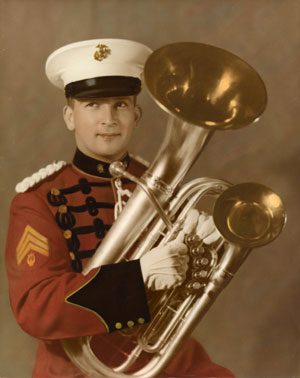
Arthur W. Lehman was a widely recorded American euphonium virtuoso and soloist. He was noted for having radically changed the way the instrument was technically performed, and was a major influence on euphonium soloists who followed him.

The inauguration of James A. Garfield as the 20th president of the United States was held on Friday, March 4, 1881, at the East Portico of the United States Capitol in Washington, D.C. This was the 24th inauguration and marked the commencement of the only four-year term of James A. Garfield as president and Chester A. Arthur as vice president. Garfield was assassinated 199 days into this term, and Arthur ascended to the presidency. Chief Justice Morrison Waite administered the presidential oath of office.

Francesco Maria Scala also known as Francis M. Scala, was an Italian-born naturalized American military band director and musician. He was the first and one of the most important and influential directors of the United States Marine Band. He defined the instrumental organization that the band maintains, he was an extremely prolific musician and composer, and improved and enlarged the repertoire of the ensemble. It is thought that under his direction the USMC Band executed for the first time "The Gendarmes' Duet" from Act II of the revision in 1867 of the Jacques Offenbach opera Geneviève de Brabant, which debuted in Paris in 1859. This melody is now known as the Marines' Hymn.
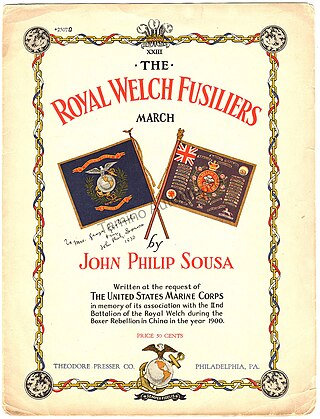
"The Royal Welch Fusiliers" is a march composed by John Philip Sousa in 1929, and then rewritten in 1930. It is the only march written by Sousa for a British Army regiment.

"In Memoriam: President Garfield's Funeral March" is a funeral dirge composed by John Philip Sousa in 1881, while serving as director of "the President's Own" United States Marine Band, for the state funeral of President of the United States James Garfield. It was debuted during the committal of Garfield's remains and, 51 years later, was performed at Sousa's own funeral by the Marine Band. It is one of only two compositions Sousa dedicated to an American president, the other one being "President Garfield's Inauguration", also written for Garfield for his inauguration.

"Anchor & Star" is an American military march composed by John Philip Sousa in 1918, while he served as leader of the U.S. Navy Battalion Band at the Great Lakes Naval Training Center during the First World War.

"Imperial Edward" is an American military march composed in 1902 by John Philip Sousa, and dedicated to Edward VII, King of the United Kingdom. Sousa received permission to dedicate the march to Edward VII during a conversation with the royal family after his command performance concert at Sandringham on December 1, 1901. The march was premiered by Sousa's band in Montreal on May 21, 1902. Sousa would later conduct the piece for King Edward in January 1903, during a performance at Windsor Castle.
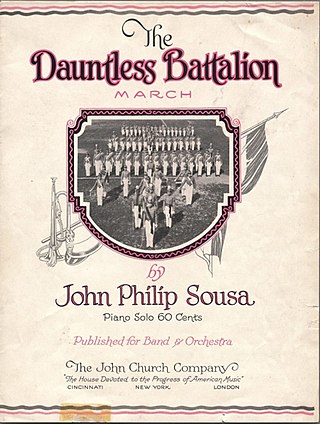
"The Dauntless Battalion" is an American military march by John Philip Sousa, published in 1922 and dedicated to the faculty and cadets of the Pennsylvania Military College (PMC) in Chester, Pennsylvania, known since 1972 as Widener University. Sousa received an honorary Doctor of Music degree from the college in February 1920. Ohio senator and future president Warren G. Harding was also honored with an honorary degree.
















